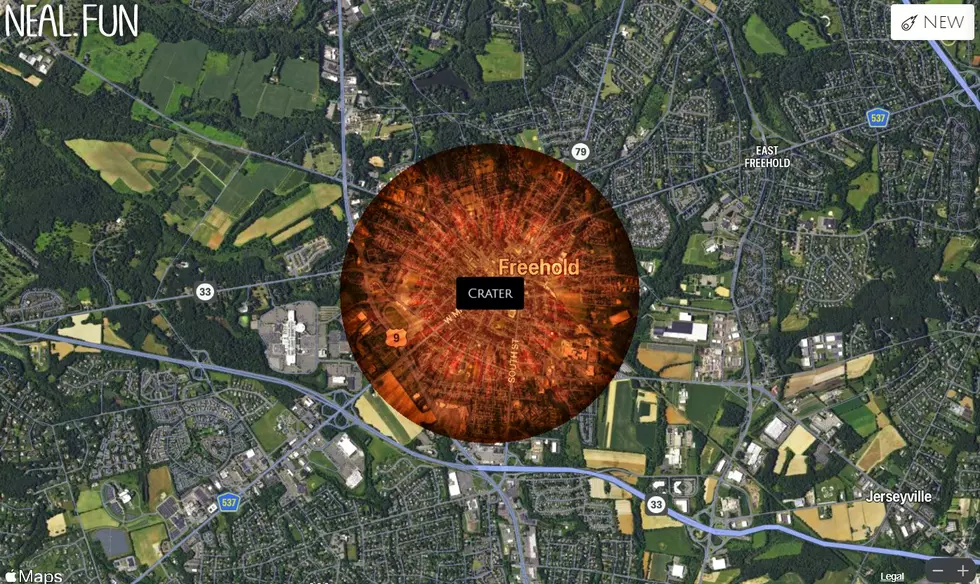
Here’s What it Would Look Like if an Asteroid Hit New Jersey
How many times in the movies have we seen the carnage left behind by an asteroid that slammed into Earth?
Sometimes, the heroes save the day and the crisis is averted.

What are the odds of an asteroid hitting Earth?
According to Interesting Engineering, the chance of an asteroid like the one that caused dinosaurs to go extinct hitting Earth is about 0.000001%. Phew.
The asteroid would have to be 5-10 kilometers in size. In other words, pretty massive.
Why do I bring this up?
I came across this absolutely terrifying website that shows you in scary detail what exactly would happen if an asteroid hit any location on the map.
It's called Asteroid Launcher, and while I'm sure some will find it interesting, it frightened the pants off of me.
First, you start with a map and choose your impact zone.
On the right-hand side, there are a bunch of options to choose from including the size of the asteroid, the speed at which it's sent careening toward Earth, and the impact angle.
Let's use the default settings. The asteroid about to hit New Jersey is 1,500 feet in diameter, it's traveling 38,000 mph, and it has an impact angle of 45 degrees.
From there, you select an impact location on the map. Sorry, Freehold.
It's time to launch the asteroid.
That is the crater that the asteroid would cause. 1.8 miles in circumference.
As if that wasn't bad enough, this asteroid would cause an 8.3-mile-wide fireball that would cause trees within 71 miles of the impact site to catch fire.
The shockwave of the asteroid is 263 decibels.
The impact would be staggering.
Homes within 75 miles of Freehold would collapse.
The peak wind speed would be just over 30,000 mph which means if you were within 50 miles of the impact site, it would feel like being inside a tornado.
Trees within 81 miles would be leveled.
On average, this kind of impact happens once every 134,000 years.
Those are a lot of years, but still, it's crazy to think about something like this happening in New Jersey.
LOOK: The most expensive weather and climate disasters in recent decades
More From 94.5 PST










